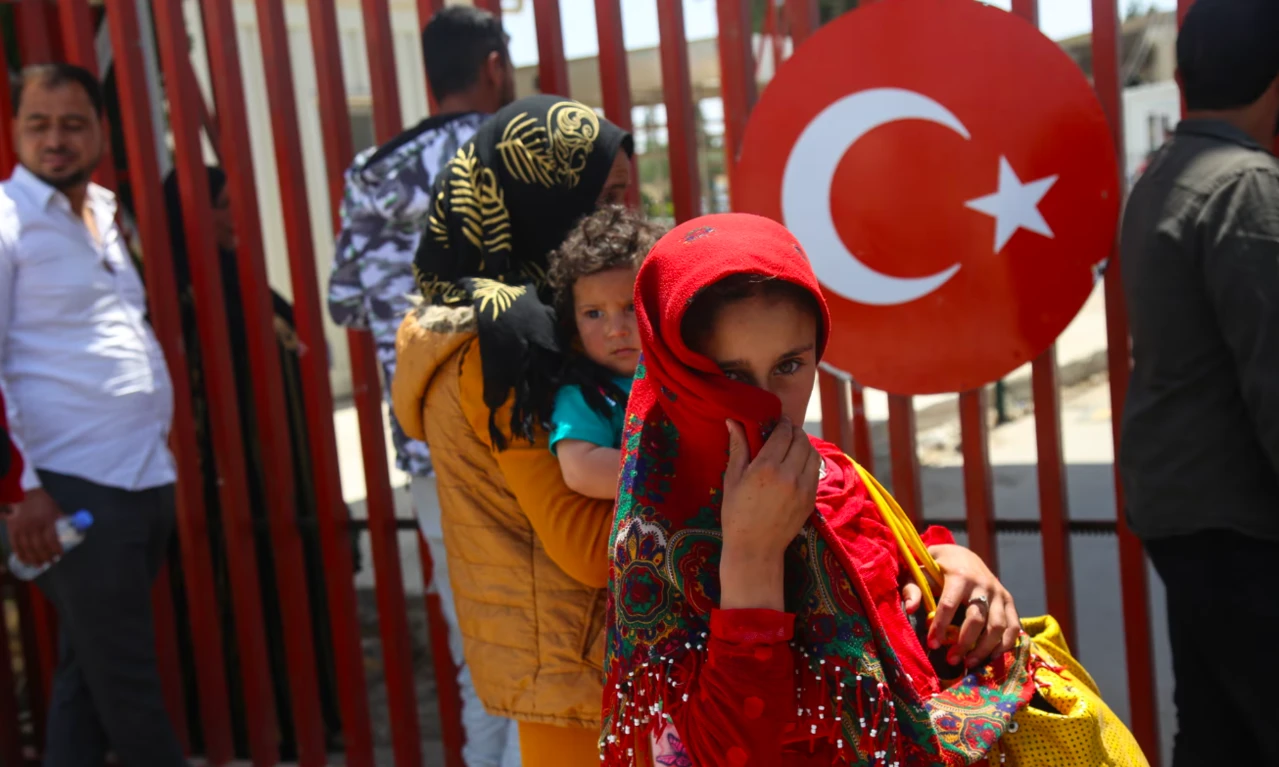Birth rate among Syrians in Türkiye shrinks dramatically, reveals report
 Syrians who fled the civil war, many of whom then lived in Sanliurfa in southeastern Türkiye, return to Syria through the Akcakale border post in May 2023 (AA Photo)
Syrians who fled the civil war, many of whom then lived in Sanliurfa in southeastern Türkiye, return to Syria through the Akcakale border post in May 2023 (AA Photo)
Researcher and analyst Omer Ozkizilcik delved into the contentious debate prevailing in Türkiye. Some characterize it as a “silent invasion,” suggesting a profound alteration in the nation’s demographic fabric. He highlighted the emergence of claims hinting at the possibility of Syrians outnumbering native Turks.
Ozkizilcik is an analyst and writer in the SETA Foundation’s security department. He worked at the Middle East Foundation from 2017 to 18 and has been editor-in-chief of Suriye Gundemi since 2016.
Changing Syrian refugee population dynamics in Türkiye
He emphasized the projection that birth rates among Syrian refugees, who have sought refuge from the ravages of war and now reside predominantly in urban areas, are poised to continue decreasing at a swifter pace compared to Turkish citizens.
Ozkizilcik noted that in 2021, Türkiye hosted a peak of 3.7 million Syrian refugees under temporary protection. During this period, Syrian refugees comprised approximately 4.6% of Türkiye’s population – which has now reduced to 3.52%.
Conclusively, Ozkizilcik posited that even under the hypothetical scenario where all Syrian refugees remain in Türkiye and do not return to Syria or relocate elsewhere, their population would not surpass 6% of Türkiye’s total populace in the foreseeable future.
Fertility trends and population dynamics
Ozkizilcik highlighted President Erdogan’s recent statements revealing a decline in Türkiye’s fertility rate to 1.51 births per woman, falling below the replacement rate of 2.1. He asserts that this trend, initiated in 2018 when Türkiye achieved a rate of 2.0 for the first time, has continued downward. Ozkizilcik presented data indicating that between 2014 and 2018, 6,535,141 children were born, whereas, between 2019 and 2023, this number decreased to 5,370,556, marking a 17.82% decline over five years.
Data discrepancies and the Syrian population
Ozkizilcik discussed the Turkish Statistical Institute (Turk Stat)’s exclusion of data on Syrian refugees’ births, contrasting it with the Directorate General of Migration Management’s regular publication of the number of Syrian refugees in Türkiye. He noted that as of April 18, 2024, statistics reveal a 22.78% decrease in the number of Syrian children aged 0-4 and 5-9 over five years.
Factors influencing birth rates
Ozkizilcik emphasized that despite the decline in birth rates among native Turks, the rate among Syrian refugees is even higher. He attributed this to historical trends showing a correlation between war and increased birth rates. Ozkizilcik further explained that urbanization affects birth rates, with almost all Syrian refugees residing in urban areas, where birth rates tend to be lower compared to rural regions. Nevertheless, Ozkizilcik noted that Syrian refugees are gradually integrating into Turkish society despite the absence of comprehensive state policies, with their birth rates expected to align with those of Turkish citizens over time.
Future demographic projections
Ozkizilcik analyzed the past decade’s data on Syrian and Turkish children in Türkiye, asserting that Syrian children currently constitute 7.29% of the total. However, he suggested that this percentage has been declining, with Syrian birth rates expected to continue decreasing at a faster rate than those among Turkish citizens. Ozkizilcik predicted that eventually, a balance in birth rates between Turks and Syrians in Türkiye may be reached.
Prospects amid migration realities
Ozkizilcik concluded by assuming no major migration movements occur in Türkiye and all Syrian refugees remain, their population would remain below 6% in Türkiye’s future. However, he acknowledged recent trends indicating a decrease in the number of Syrian refugees in Türkiye, attributable to cancellations of registrations of those heading to Europe and returning to Syria. Ozkizilcik stated that the exact number of Syrians expected to remain in Türkiye versus those returning to Syria or relocating elsewhere remains speculative.
Nevertheless, he asserted that any projection should not surpass the 6% threshold.



